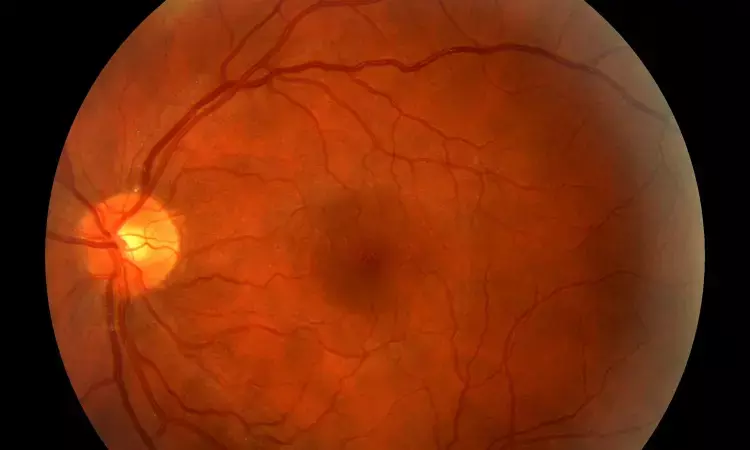- Home
- Medical news & Guidelines
- Anesthesiology
- Cardiology and CTVS
- Critical Care
- Dentistry
- Dermatology
- Diabetes and Endocrinology
- ENT
- Gastroenterology
- Medicine
- Nephrology
- Neurology
- Obstretics-Gynaecology
- Oncology
- Ophthalmology
- Orthopaedics
- Pediatrics-Neonatology
- Psychiatry
- Pulmonology
- Radiology
- Surgery
- Urology
- Laboratory Medicine
- Diet
- Nursing
- Paramedical
- Physiotherapy
- Health news
- Fact Check
- Bone Health Fact Check
- Brain Health Fact Check
- Cancer Related Fact Check
- Child Care Fact Check
- Dental and oral health fact check
- Diabetes and metabolic health fact check
- Diet and Nutrition Fact Check
- Eye and ENT Care Fact Check
- Fitness fact check
- Gut health fact check
- Heart health fact check
- Kidney health fact check
- Medical education fact check
- Men's health fact check
- Respiratory fact check
- Skin and hair care fact check
- Vaccine and Immunization fact check
- Women's health fact check
- AYUSH
- State News
- Andaman and Nicobar Islands
- Andhra Pradesh
- Arunachal Pradesh
- Assam
- Bihar
- Chandigarh
- Chattisgarh
- Dadra and Nagar Haveli
- Daman and Diu
- Delhi
- Goa
- Gujarat
- Haryana
- Himachal Pradesh
- Jammu & Kashmir
- Jharkhand
- Karnataka
- Kerala
- Ladakh
- Lakshadweep
- Madhya Pradesh
- Maharashtra
- Manipur
- Meghalaya
- Mizoram
- Nagaland
- Odisha
- Puducherry
- Punjab
- Rajasthan
- Sikkim
- Tamil Nadu
- Telangana
- Tripura
- Uttar Pradesh
- Uttrakhand
- West Bengal
- Medical Education
- Industry
EHR-Based Survival Models Accurately Predict Progression to Proliferative Diabetic Retinopathy: JAMA

USA: A new study has found that survival models using electronic health record (EHR) data can accurately predict the progression to proliferative diabetic retinopathy (PDR) in individuals with type 2 diabetes. Key risk factors identified include age, race, severity of nonproliferative diabetic retinopathy (NPDR), and diabetic nephropathy. The study has been published in JAMA Network Open.
Led by Dr. Iris M. Kim from the Department of Ophthalmology, University of California, San Francisco, the prognostic study aimed to assess whether clinical data available through EHRs could be harnessed to anticipate the onset of PDR—a severe, vision-threatening complication of diabetic retinopathy. Researchers analyzed health records of 7,739 adults with type 2 diabetes who had been diagnosed with NPDR or diabetic macular edema (DME).
The study utilized de-identified data from the University of California Health Data Warehouse, which houses information on approximately 10 million patients. Participants were included if they were 18 years or older and had no previous diagnosis of PDR before the study index date. Patients were split into development and external test cohorts, with the development set further divided into training and internal test groups.
Three predictive models—Cox proportional hazards regression, Cox with least absolute shrinkage and selection operator (LASSO), and random survival forest (RSF)—were trained and tested on these datasets. The models evaluated a broad range of factors, including demographic data, comorbid conditions, laboratory values, medications, and ophthalmic diagnoses.
The findings of the study are summarized as follows:
- During a mean follow-up period of approximately two years, 9.3% of participants progressed to proliferative diabetic retinopathy (PDR).
- The average time to progression was 1.89 years.
- All three survival models demonstrated strong predictive performance, with concordance index (C-index) values between 0.73 and 0.75 in both internal and external test sets.
- The Cox proportional hazards regression and random survival forest (RSF) models showed good calibration for up to two years.
- Key predictors of progression to PDR identified by the models included older age, racial and ethnic background, presence of diabetic macular edema (DME), greater severity of nonproliferative diabetic retinopathy (NPDR) at baseline, higher mean hemoglobin A1c levels, insulin use, and diabetic nephropathy.
- The findings highlight the combined impact of systemic and eye-related factors in determining the risk of PDR progression.
According to the authors, these predictive tools offer an opportunity for earlier detection and personalized care planning. By anticipating which patients are at highest risk, clinicians can tailor monitoring intervals and allocate healthcare resources more efficiently. The study highlights the growing role of EHR-integrated machine learning in improving chronic disease management.
The authors concluded, "As EHR systems continue to evolve, the integration of predictive modeling into routine care could significantly enhance outcomes for patients with diabetes at risk of vision loss."
Reference:
Kim IM, Radgoudarzi N, Chen EM, et al. Time to Progression to Proliferative Diabetic Retinopathy in Patients With Type 2 Diabetes. JAMA Netw Open. 2025;8(7):e2521150. doi:10.1001/jamanetworkopen.2025.21150
Dr Kamal Kant Kohli-MBBS, DTCD- a chest specialist with more than 30 years of practice and a flair for writing clinical articles, Dr Kamal Kant Kohli joined Medical Dialogues as a Chief Editor of Medical News. Besides writing articles, as an editor, he proofreads and verifies all the medical content published on Medical Dialogues including those coming from journals, studies,medical conferences,guidelines etc. Email: drkohli@medicaldialogues.in. Contact no. 011-43720751


